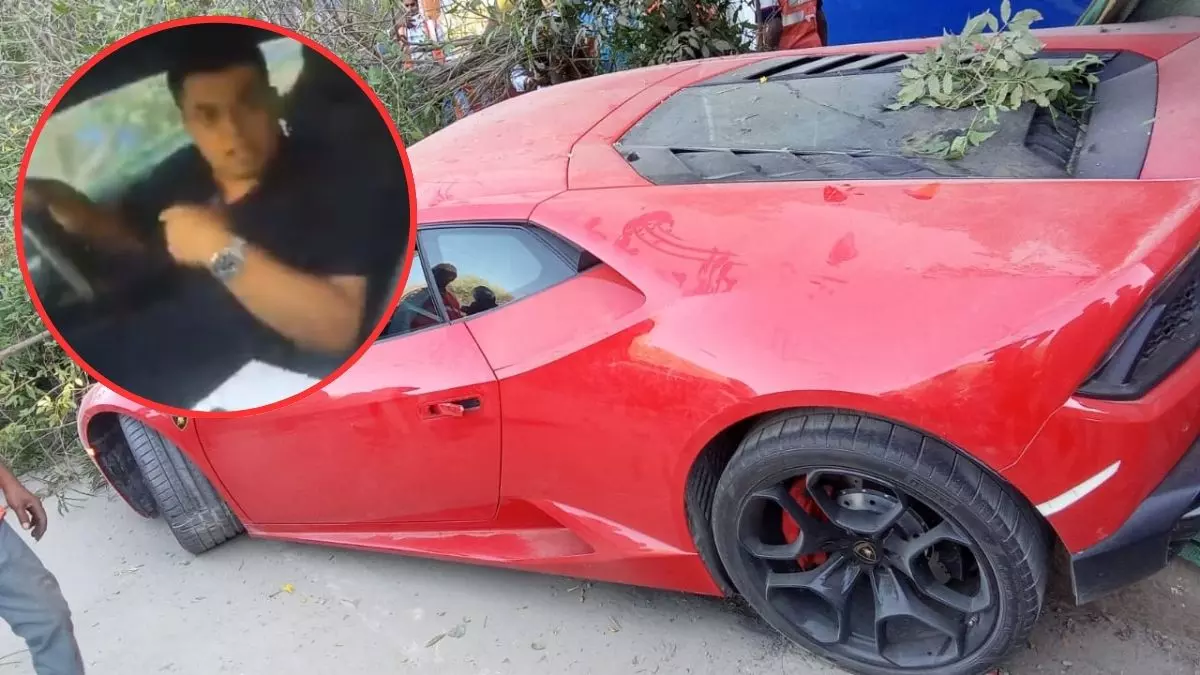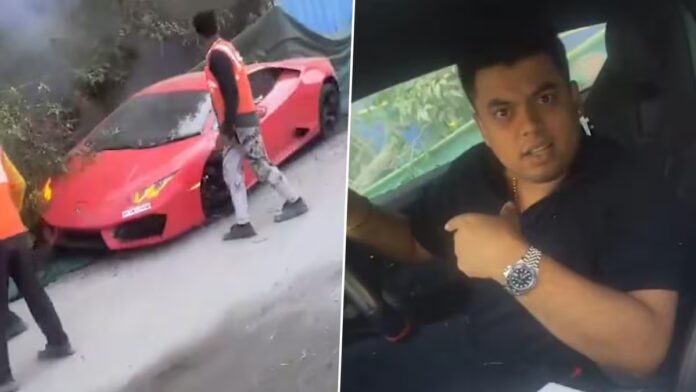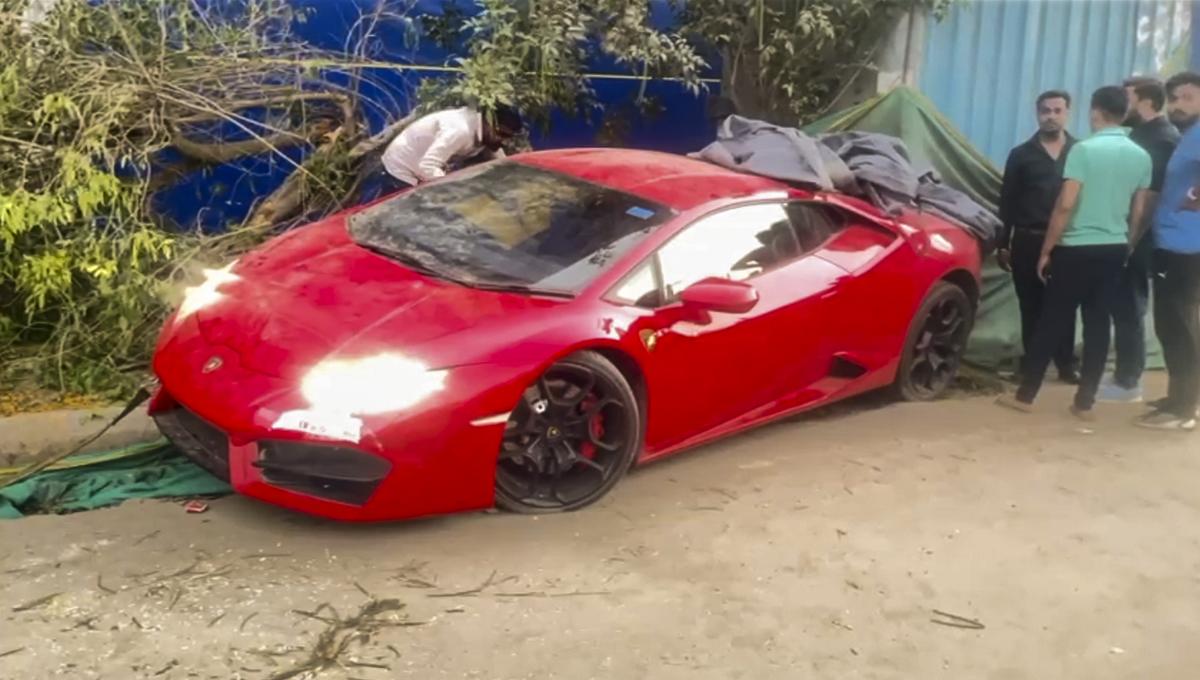Reckless driving has become an epidemic in India, claiming thousands of lives each year. The recent incident in Noida, where a man driving a luxury Lamborghini hit two construction workers and then callously asked, “Has someone died here?” is a grim reminder of the growing indifference towards human life on the country’s roads. This single event is not an isolated incident but part of a larger crisis that reveals deep-seated flaws in India’s road safety enforcement, legal system, and societal attitudes towards responsible driving.
The increasing frequency of hit-and-run cases, often involving influential individuals who believe they can evade justice, raises serious concerns about the effectiveness of law enforcement and the lack of accountability for traffic violations. As India continues to urbanize and vehicle ownership rises, the number of road accidents and fatalities is escalating at an alarming rate. It is imperative to analyze the legal framework governing reckless driving, examine past cases, understand the consequences of these incidents, and demand stricter enforcement of laws to curb this dangerous trend.
What happened here?
On Sunday, March 30, 2025, a Lamborghini driver struck two pedestrians on a footpath adjacent to an under-construction building in Noida’s Sector 94. The victims, laborers from Chhattisgarh, were immediately transported to a nearby hospital, where they were treated for leg fractures and are currently reported to be out of danger.
A video capturing the aftermath of the incident has surfaced online, revealing a bystander confronting the driver, questioning, “Do you know how many people have died here?” The driver responded indifferently, asking, “Has someone died here?”
This incident draws parallels to a previous accident on the Noida-Greater Noida Expressway in 2017, where a Lamborghini collided with a Maruti Eeco van, resulting in the van driver’s death. The crash occurred when a Swift Dzire attempted to overtake the Lamborghini, leading to a series of collisions.
The recurrence of such accidents underscores the urgent need for stricter enforcement of traffic laws and heightened public awareness about road safety.
The Growing Menace of Hit-and-Run Cases in India
According to the National Crime Records Bureau (NCRB), hit-and-run cases accounted for nearly 30% of all road accidents in India in 2022. This means that nearly one-third of road accidents involve drivers fleeing the scene instead of assisting the victims. The most disturbing aspect of these cases is the impunity with which offenders act, often due to weak enforcement and lenient penalties.
Major metropolitan areas such as Delhi, Mumbai, Bengaluru, and Noida have seen an alarming rise in cases involving rash driving, drunk driving, and overspeeding. The proliferation of high-speed luxury cars has further exacerbated the problem, with many young and wealthy individuals treating public roads as racetracks. In numerous instances, those responsible for fatal accidents have either gone unpunished or received negligible sentences, reinforcing the perception that laws are ineffective against the privileged class.
A Look at Previous High-Profile Cases
India has witnessed numerous cases of reckless driving that resulted in fatalities and serious injuries. However, the judicial system’s inconsistent handling of these cases has led to public outrage and debates over whether existing laws are sufficient to deter such behavior.
- Salman Khan’s 2002 Hit-and-Run Case
One of the most infamous hit-and-run cases in India involved Bollywood actor Salman Khan. In 2002, he allegedly ran over a group of people sleeping on a Mumbai pavement, killing one person and injuring four others. The case dragged on for over a decade, and despite strong evidence, he was acquitted due to “lack of evidence.” This case set a dangerous precedent where wealth and influence seemingly outweighed justice.
- Pune Porsche Crash (2024)
In one of the most shocking recent cases, a 17-year-old boy driving a high-end Porsche in Pune under the influence of alcohol crashed into a motorcycle, killing two young IT professionals. Initially granted bail within hours, the outrage led to the juvenile being charged as an adult under the stringent new hit-and-run laws. This case reignited discussions on the accountability of wealthy and influential individuals in fatal accidents.
- BMW Hit-and-Run in Delhi (2016)
A young businessman in Delhi ran over a pedestrian with his BMW and fled the scene. Despite clear CCTV footage and eyewitness accounts, the case was mired in delays, and the accused received a light sentence. Such cases highlight how legal loopholes and slow judicial processes contribute to the lack of justice for victims.
These cases, among many others, demonstrate that reckless drivers often escape with little to no punishment, reinforcing the idea that the law is not equally applied to all citizens.
Understanding the Legal Framework: Are the Laws Strong Enough?

For years, India’s legal provisions for reckless driving and hit-and-run cases were criticized for being too lenient. Under Section 304A of the Indian Penal Code (IPC), causing death by negligence was punishable by a maximum of two years in prison or a fine. This punishment was widely considered inadequate to deter reckless drivers.
Recognizing the gravity of the situation, the government introduced the Bharatiya Nyaya Sanhita (BNS) in December 2023, which replaced the IPC and included stricter penalties:
- Section 106(1) of BNS – If a driver causes an accident but reports it, they can face up to 5 years of imprisonment and a fine.
- Section 106(2) of BNS – If a driver flees without reporting, they can be imprisoned for up to 10 years and fined ₹7 lakh.
These changes were meant to ensure stricter accountability, but the effectiveness of these laws depends on their implementation and enforcement. Despite stronger laws, conviction rates remain low due to poor policing, corruption, and political influence shielding offenders.
Why Are Hit-and-Run Cases Increasing in India?
Hit-and-run cases in India have been rising at an alarming rate, with thousands of accidents reported annually. These cases reflect not just reckless driving but also deeper issues related to law enforcement, societal attitudes, and the influence of wealth and power. Despite stricter laws, offenders continue to escape justice, leaving victims and their families to suffer the consequences. Several key factors contribute to the growing menace of hit-and-run incidents in the country.
- Weak Enforcement of Traffic Laws
India has traffic laws in place, but their implementation remains inadequate. Many reckless drivers continue to speed, break signals, or drive under the influence without fear of consequences. Corruption within the traffic police is a major issue, with many officers accepting bribes instead of enforcing penalties. Additionally, a lack of resources, such as speed cameras and patrolling officers, further weakens enforcement. The pressure of influential individuals also leads to selective policing, where cases involving the wealthy and powerful are often overlooked or diluted. As a result, reckless driving continues unchecked, and offenders feel emboldened to flee accident scenes without fear of arrest.
- Increasing Number of Vehicles and Poor Infrastructure
With rapid urbanization, the number of vehicles on Indian roads has skyrocketed. However, road infrastructure has not kept pace with this growth. Many cities lack proper traffic management systems, clear road signage, and pedestrian crossings, increasing the risk of accidents.
Poorly lit roads, potholes, and unregulated speed limits further add to the danger. As more vehicles occupy the roads, reckless drivers often choose to flee after accidents, fearing legal consequences, traffic congestion, or mob violence. The absence of effective surveillance systems also makes it easier for offenders to escape without being caught.
- Influence of Wealth and Power
Many high-profile hit-and-run cases in India involve individuals from affluent or politically connected families. These offenders often manipulate the legal system, delay trials, or even use financial power to influence witnesses and law enforcement. In cases where the driver is from a privileged background, legal proceedings are often slow, and sentences are either reduced or dismissed altogether.
For example, past cases involving celebrities and politicians have shown that those with money and influence can navigate the judicial system to their advantage, escaping severe punishment. This unequal treatment further emboldens reckless drivers, knowing they can get away with their crimes.
- Public Apathy and Fear of Legal Trouble
One of the most disturbing aspects of hit-and-run cases is the lack of public intervention. Many bystanders hesitate to help victims due to fear of police harassment, legal complications, or retaliation from the offender’s family. Despite the introduction of the Good Samaritan Law, which protects those who assist accident victims, public awareness about this law remains low.
In many cases, injured victims are left unattended for crucial minutes or even hours, reducing their chances of survival. This widespread apathy contributes to the severity of hit-and-run incidents, as drivers know that even if they flee, victims may not receive immediate help.
Impact on Victims and Their Families
The consequences of hit-and-run accidents are devastating, often leaving victims with severe injuries or causing fatalities. Many survivors suffer from permanent disabilities, leading to loss of livelihood and long-term emotional trauma. Families of deceased victims face financial hardships, struggling with medical expenses and legal battles.
Although the government has increased compensation under the Motor Vehicles (Amendment) Act, in reality, very few victims actually receive the promised aid. Between 2017 and 2023, only 6% of eligible victims received financial compensation, highlighting the inefficiency of the system. Many families remain entangled in legal struggles for years, hoping for justice that often never comes.
The rising number of hit-and-run cases in India is a national crisis that requires immediate action. Strengthening law enforcement, improving road infrastructure, ensuring equal justice for all offenders, and increasing public awareness are crucial steps in tackling this issue. If the government and society fail to act now, reckless driving and its tragic consequences will continue to plague Indian roads.
How Can India Stop the Hit-and-Run Epidemic?

The rising number of hit-and-run cases in India is a pressing issue that demands immediate action. Reckless driving, combined with weak law enforcement and judicial delays, has created a situation where offenders often escape punishment. To address this crisis, several critical measures need to be implemented to ensure road safety and justice for victims.
One of the most urgent solutions is stricter law enforcement. Police officers must receive better training and advanced equipment to track and apprehend offenders swiftly. Additionally, strict penalties should be imposed without favoritism to ensure that all violators, regardless of their social or economic status, are held accountable for their actions.
Another crucial step is the establishment of fast-track courts for hit-and-run cases. Delays in the judicial process often allow offenders to escape justice. Special courts dedicated to handling such cases with priority can ensure quicker verdicts and stricter punishments, creating a stronger deterrent against reckless driving.
Improving road safety measures is also essential. Accident-prone areas should be equipped with better road designs, pedestrian safety zones, and speed breakers to reduce the chances of collisions. Additionally, AI-based surveillance systems can be employed to monitor traffic violations and automatically fine reckless drivers, ensuring better compliance with traffic laws.
Public awareness campaigns can play a significant role in preventing hit-and-run cases. Educating citizens about the legal consequences of reckless driving and the importance of assisting accident victims can help change attitudes. The enforcement of Good Samaritan Laws, which protect those who help victims from legal troubles, can encourage more people to step forward in emergencies.
Lastly, mandatory alcohol and speed testing must be conducted more frequently, particularly in urban areas. Strict punishments for drunk driving and overspeeding can help deter reckless behavior and make India’s roads safer for everyone.
Final Thoughts: A Nation at a Crossroads
India is at a crossroads in its battle against reckless driving. The Noida Lamborghini incident is just one of many cases that expose the nation’s failure to enforce road safety laws effectively. Every life lost to reckless driving is a preventable tragedy, and as a society, we must demand stricter enforcement, faster justice, and greater accountability.
If India does not act now, the number of hit-and-run cases will only continue to rise, leaving more families devastated and more lives lost to sheer negligence. The time for empty promises and half-hearted reforms is over—it is time for real change before another reckless driver turns the streets into a death trap.


